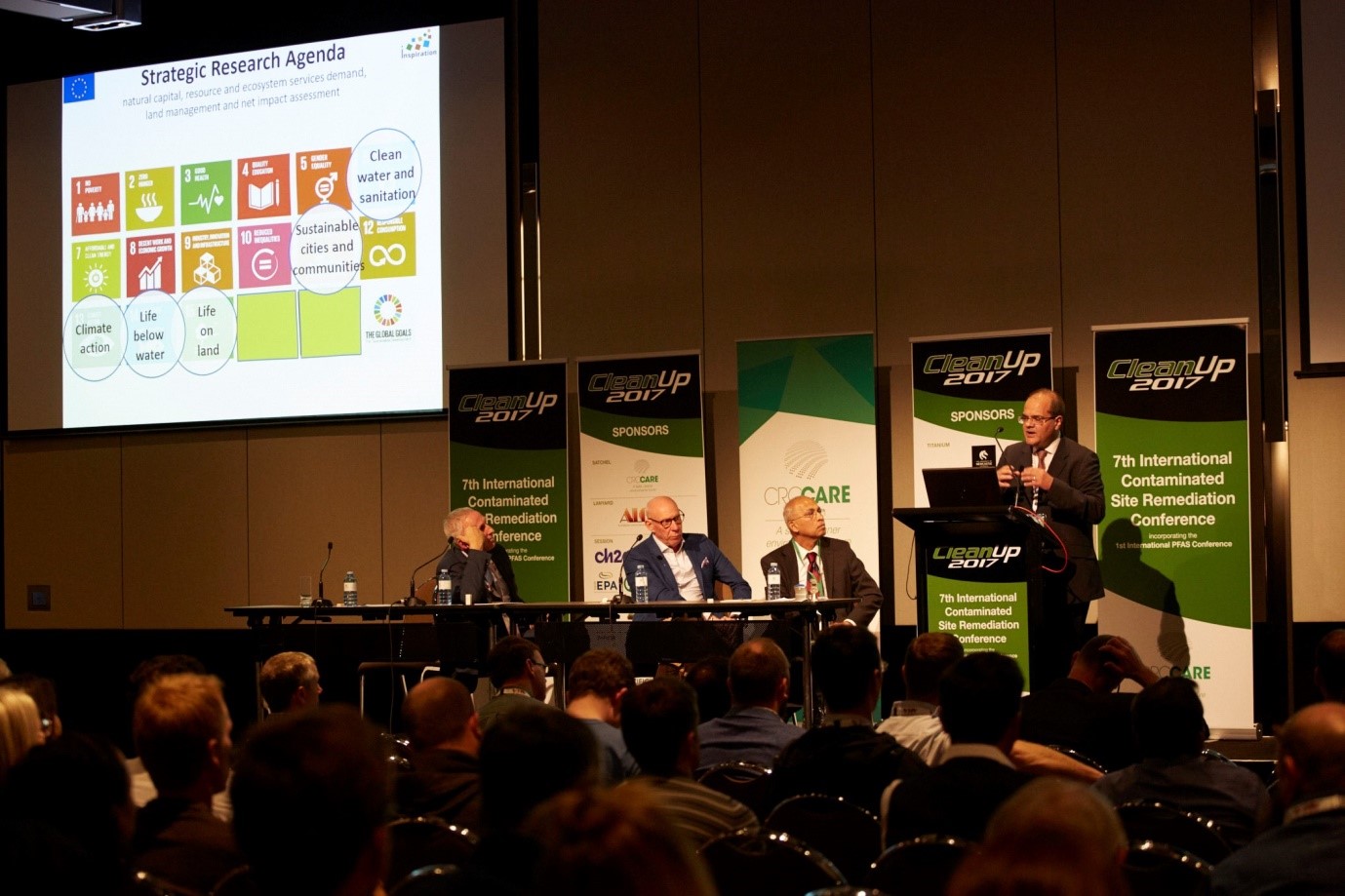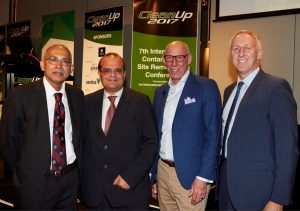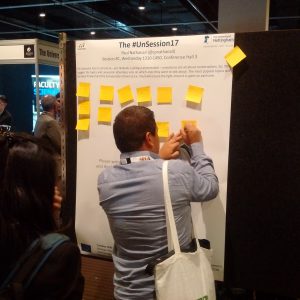
September 27, 2017, by lzzeb
A week in the most liveable city in the world
A blog by Professor Paul Nathanail
The biennial CleanUp conference http://www.cleanupconference.com/ found me in Melbourne for a busy week of lectures, panels and workshops. No time for jet lag! Leaving Nottingham on Thursday evening after a very successful three day writing workshop for the H2020 INSPIRATION project, I arrived early on Saturday morning – via Dubai and Singapore. The rest of the day was spent preparing and getting printed the poster to promote Wednesday’s “Unsession” and finalising slides.
Sunday morning found me in the Per- and Polyfluoroalkyl Substances (PFASs) workshop [http://www.cleanupconference.com/sessions/pfas-workshop/]. Expertly delivered by Rula Deeb (Geosyntec, USA) and colleagues joining us from the USA via weblinks. PFASs were used for fire-fighting foams and on consumer products and are now being found at ultra low concentrations in many locations worldwide.
The late Brian Robinson was the Environmental Protection Authority of Victoria’s longest serving chief executive and a driving force behind the successful application for funding for what is now the CRC CARE [http://www.crccare.com]. CRC CARE fosters industry-led collaborations between industry, researchers and the community to focus on research and development that is useful and ripe for commercialisation. I was privileged to deliver the fourth Brian Robinson Memorial lecture. The complete lecture utterly compressed was “#CLUC BR knew, led, inspired. ENV matters to us; we understand & CAN care for it. Money matters, but isn’t all. People & biodiversity first”. I ended by inviting CRC CARE managing director and conference chair Professor Ravi Naidu to raise a glass of malt whisky with me in Brian’s memory – hoping I would be forgiven for not bringing triple distilled whiskey with me instead!

Professor Ravi Naidu, Paul Nathanail, Paul Vogel CRC CARE Chairman and Chair of the NORTHERN TERRITORY ENVIRONMENT PROTECTION AUTHORITY, Professor Kavin Hall Deputy Vice Chancellor University of Newcastle NSW (© Susan Brown, www.susangordonbrown.com.au reproduced with permission)
Monday’s highlight was the plenary lecture by Professor John Cherry. He lamented the absence of engineering geology in hydrogeological modelling. I reminded him of our only previous meeting when he showed my MSc Contaminated Land Management students around his field research facility at the Canadian Air Force Borden base.
If it’s Tuesday morning, it must be time to share the EU HORIZON 2020 INSPIRATION [http://www.inspiration-h2020.eu/] project’s strategic research agenda for spatial planning, land use and soil systems. What do we need to know to manage our soil-sediment-water nexus better?
Then time to deliver a keynote reflection on sustainable remediation – celebrating the recent publication of the ISO standard on sustainable remediation written by the ISO working group that I chair. Australia pioneered the ‘social licence to operate’ a remediation project with the work in the run up to the 2000 Sydney Olympics.
The day closed with a panel on “Education and training in environmental risk assessment and remediation”. In this I was able to share experience of just under twenty years of vocational postgraduate teaching here in Nottingham that culminated in an entirely online MRes in Contaminated Land Management.
Wednesday was the final day of the conference. An early start to join an expert panel discussion entitled “Thousands of new chemicals a year: how do we protect ourselves?” hosted by Bernie Hobbs for ABC Radio National’s ‘Big Ideas’. I know it was radio but I still think having a physical model of the Perfluorooctanoic acid molecule (PFOS) was a good prompt. The early start was significant because the previous evening had seen us enjoying the gala dinner – at which I was delighted and honoured to have been appointed a CRC CARE Fellow.
And my final engagement was to… chair the “Unsession”. An unsession is a session with no structure – upfront. The session content was determined by conference delegates suggesting topics and then voting on which ones to cover. We had time for three topics: risk communication with the general public, the need to reach out to young professionals and students so they can get a sense of the passion and interest we have in working on cleaning up soils and groundwater and the role of big data, machine learning and data science in land remediation.
No comments yet, fill out a comment to be the first


Leave a Reply